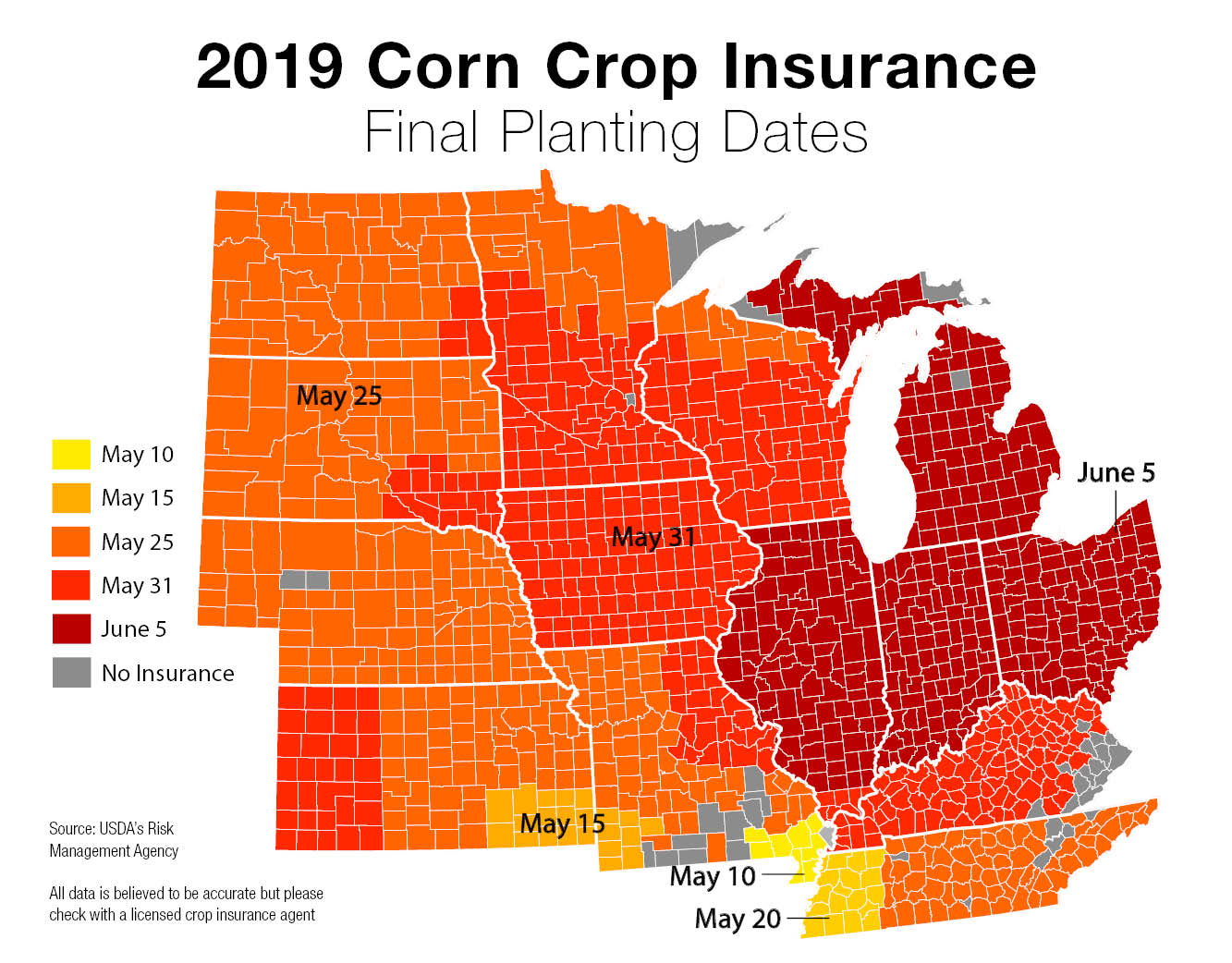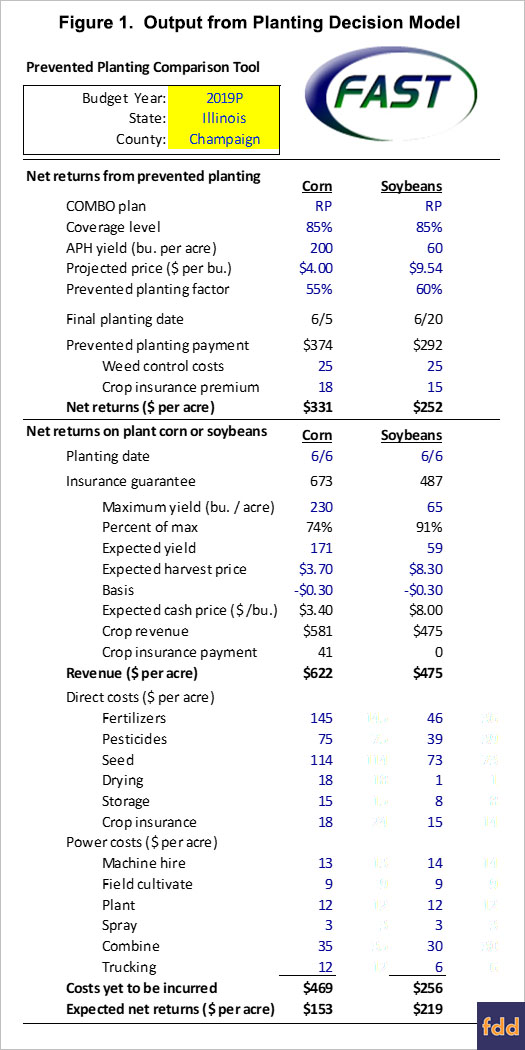Answers to Common Prevent Plant Questions
Prevented planting decisions are always difficult, but market and policy dynamics make 2019 decisions even more difficult, according to recent analysis from the University of Illinois and Ohio State University. (See the farmdoc daily piece, “Prevented Planting Decision for Corn in the Midwest,” written by Gary Schnitkey, Krista Swanson, Ryan Batts and Carl Zulauf).
Prevented planting is available for farmers purchasing the Common Crop Insurance (COMBO) product. Once the final planting date has arrived, farmers can choose to take a prevented planting payment, plant corn or plant soybeans/another crop. You can plant a cover crop prevented planting acres, but you’ll have some restrictions on haying and grazing that cover crop.
In many cases, taking the prevented planting payments will have higher expected returns than planting this year, the economists explain. To make a smart decision, Schnitkey, Swanson, Batts and Zulauf provide answers to common questions concerning prevent plant.
What is my final planting date?
Depending on the area, final planting dates have already passed or are May 25, May 31 or June 5 for corn. For soybeans, the dates are June 10, June 15, June 20, June 25 or June 30, depending on your location. (Click maps to enlarge.)
Will my APH (Actual Production History) be affected if I take prevent plant?
No. Generally, prevented planting will not impact the APH yield in future years unless a second crop is planted on prevented planting acres.
For example, an insurable unit has 500 acres, and 400 acres are planted to corn. Prevented planting payments are taken on 100 acres and a second crop is not planted on those 100 acres. In this case, the yield used in calculating the APH for this insurable unit will be based on production from the 400 planted acres divided by 400 planted acres.
Are all acres eligible for prevented planting?
No. Each insurable unit will have different acres eligible for prevented planting. Knowing how many acres are eligible is key, and your crop insurance agent help you determine which acres are eligible. As a general guideline, the maximum acres eligible for prevented planting payments equal the maximum acres of corn planted in the last four years in that insurable unit, adjusted for acreage increases, less corn acres planted in 2019.
For example, a 100-acre insurance unit has remained the same size in the last four years. If the maximum number of acres in corn in one of the four years is 75 acres, then 75 acres is the maximum number of acres on which prevented planting of corn can be taken. If this farm gets 50 acres of corn planted, then only 25 acres are eligible for a prevented planting payment on corn.
Will taking the prevent plant option influence my ARC or PLC payments?
No. Receiving prevented planting payments will not influence Agricultural Risk Coverage (ARC) or Price Loss Coverage (PLC) payments.
Will taking prevent plant claims affect future Market Facilitation Program (MFP) payments?
Most likely. In 2018, the MFP resulted from President Trump Administration’s desire to compensate farmers for losses due to trade disputes. Payments were $1.65 per bushel for soybeans and $.01 per bushel for corn on 2018 production. If prevented planting is taken, no bushels will be produced, and any future MFP-like payments paid by bushel produced will not occur.
Will a prevent plant claim be more profitable than planting corn or soybeans this year?
Maybe. Based on plugging a sample farm’s data into the farmdoc Prevented Planting Module, prevented planting has the highest expected return relative to planting corn or planting soybeans.
Here’s the data example for a hypothetical farm in Champaign County, Ill., that has chosen a revenue protection (RP) policy at an 85% coverage level. For Champaign County, the final planting date for corn is June 5 and for soybeans is June 20. The RP policy for corn has a 200 trend-adjusted APH yields and a 55% prevented planting payment factor applies for corn.
If you are considering the prevent plant option in 2019, contact your crop insurance agent. Eligibility and reporting requirements are key to assuring that a prevented planting payment can be received. Also, potential prevented planting payments will be significant sources of farm income this year for farmers. As a result, getting the details wrong can have large impacts on financial positions of farms.
Read More
Prevented Planting Decision for Corn in the Midwest
Is Prevent Plant the Most Profitable Option in 2019?
Planting Delayed? Here Are Your Prevent Plant Options
Source: Sara Schafer, Top Producer



